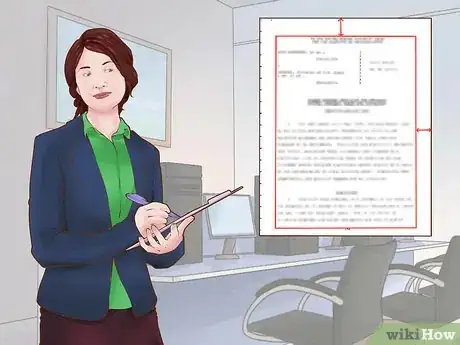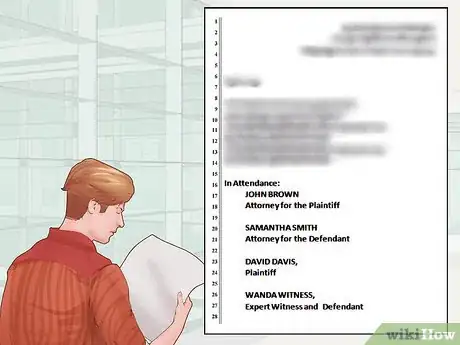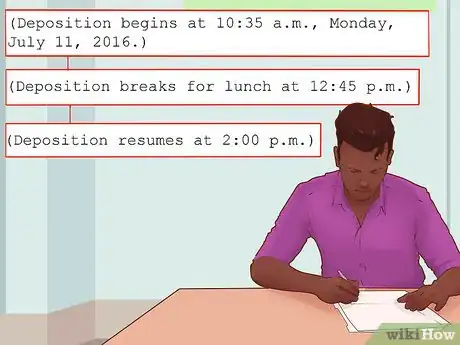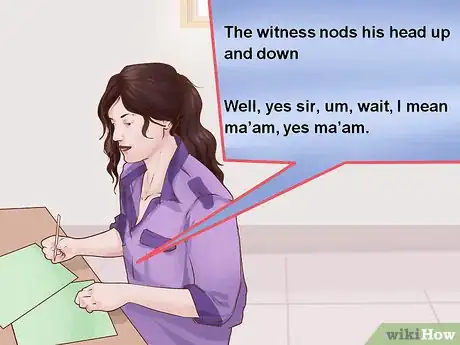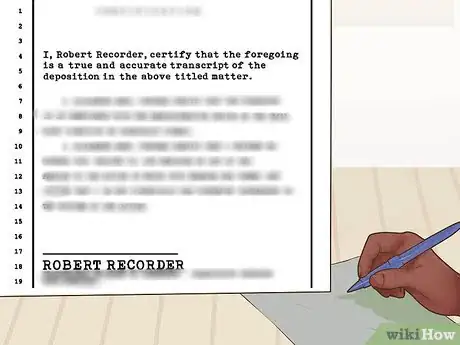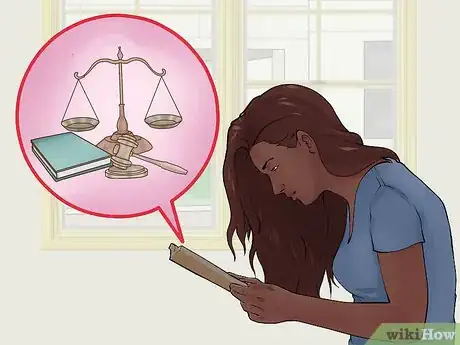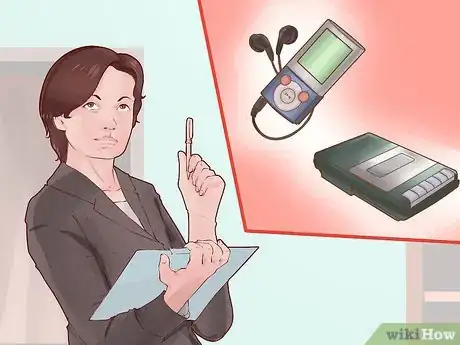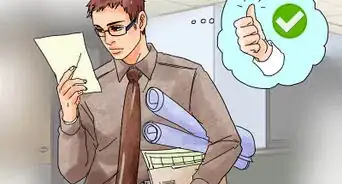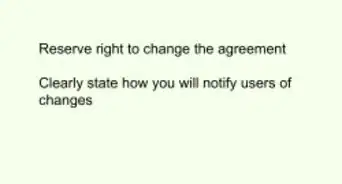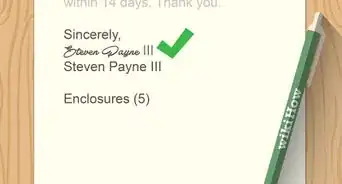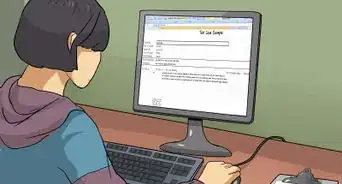This article was co-authored by Clinton M. Sandvick, JD, PhD. Clinton M. Sandvick worked as a civil litigator in California for over 7 years. He received his JD from the University of Wisconsin-Madison in 1998 and his PhD in American History from the University of Oregon in 2013.
This article has been viewed 39,139 times.
A legal transcript is the written record of all court, trial, deposition or hearing proceedings. A transcript may play an important role during the appeals process and other legal hearings. Its accuracy is of the utmost importance. In order to write a legal transcript, some degree of law knowledge and terminology is required in addition to other important elements. Some legal transcripts are created by licensed court employees, but there is also a strong market for skilled but unlicensed people to prepare transcripts of many legal meetings or events.
Steps
Recording and Preparing a Legal Transcript
-
1Learn the required or expected format, if any. If you are working for a private lawyer or law firm, you should begin by understanding what they prefer. Ask if they have any particular expectations or requirements for the transcript. You may also need to follow local or statewide regulations for formatting.[1]
- For example, the California Court Reporters Association publishes on its website the “Minimum Transcript Format Standards.” These standards establish the number of lines per page, the spacing, the margin sizes, and so on. You need to find out if similar standards or expectations exist for your location.
- As another example, the court system of Massachusetts publishes a booklet entitled “Uniform Transcript Format.” This booklet sets forth expectations on everything from formatting the title page to what color and weight paper are to be used.
-
2Identify the proceeding that you are transcribing. A transcript of any legal meeting, deposition or hearing must clearly identify its source. You will need a cover page that identifies the type of meeting and the location. If this is specifically connected to an ongoing court case, you should provide the name of the case, the court, and the docket number.
- For example, your cover and first page heading may identify, “Deposition of John Doe, at the Offices of Smith & Wesson, 123 Main Street, Los Angeles, CA, in the matter of Davis v. Roberts, Case Number 16-12345.”
Advertisement -
3Identify the parties who are part of the meeting. On the title page, you will usually be expected to identify the individuals who are part of the meeting. This will add clarity for anyone reading the transcript. You should identify people by name and by their role in the meeting or hearing.
- For example, you may record, “In attendance: John Brown, Attorney for the Plaintiff. Samantha Smith, Attorney for the Defendant. David Davis, Plaintiff. Wanda Witness, expert witness and deponent.”
-
4Record the date and time. A legal transcript must report the date and time that the dialogue begins. You should note any time when a break occurs. Then you will report the time that the proceeding ends.
- For example, at the start of a deposition transcript, you may note: “Deposition begins at 10:35 a.m., Monday, July 11, 2016.” Then report the conversation that occurs, until you note, “Deposition breaks for lunch at 12:45 p.m.,” followed by “Deposition resumes at 2:00 p.m.”
-
5Record the proceedings precisely and completely. You need to indicate each person who is speaking and record each word carefully. Generally, you should include even such utterances as “uh” and “um,” because they may indicate a person's pause while thinking of an answer.
- Include nonverbal gestures when they are relevant to the proceedings. For example, you may note, “The witness nods his head up and down.”
- Provide a complete record, even when the speaker changes his train of thought, makes grammatical mistakes or otherwise corrects himself verbally. For example, “Well, yes sir, um, wait, I mean ma'am, yes ma'am.”
-
6Identify speakers accurately. At the beginning of the document, it is important to list the individuals who are in the meeting. As the transcript progresses, you need to identify each speaker consistently and accurately. Depending on the type of document you are creating and the jurisdiction where you are working, there may be a specified format for identifying speakers.
- For example, you may initially list individuals by name, and then each time the person speaks, the line will begin with a designation, such as "PROSECUTOR," "DEFENDANT," or "WITNESS." It is common to identify the speakers in all capitals, so that each change of speaker stands out visibly in the transcript.
-
7End the transcript with the time and date. Include any future proceeding information, such as a trial or hearing date and time, parties and legal representatives to be included.
-
8Create a signature page for yourself. At the end of the transcript, you need to attest that the transcript is a truthful account of the proceeding. This is a fairly standard signature page, much like one you would use for an affidavit or other legal document that you've recorded and transcribed. It should include a statement that includes a truthfulness oath along with your signature, the date and the time.
- For example, your certification may say, “I, Robert Recorder, certify that the foregoing is a true and accurate transcript of the deposition in the above titled matter.” Then sign it.
Completing and Delivering the Transcript
-
1Know when the attorney needs the final product. Preparing legal transcripts is usually a contract job for a particular attorney or law firm, unless you are a professional court reporter or stenographer. As a contract worker, you need to check with your client to understand when they need the final transcript. You may be able to set a standard price for your services and then charge a higher price for a rush job.
-
2Find out where to send the transcript. When you take the job, you need to find out how many copies you are to prepare, and who will receive them. You may be preparing the transcript only for the attorney who hired you, or you may need to send a copy to everyone who attended the meeting. Make sure you know this before you finish the job.
- If you are preparing multiple copies for multiple people, be sure that you understand who will be charged for them. Usually, each attorney or individual who requests a copy will be responsible for his or her copy of the transcript. However, in some cases, one party will bear all the costs.
-
3Send a copy of the recording, if requested. Some attorneys may request a copy of the recording of the meeting, while others may only need the transcript. Make sure you understand the attorney's wishes. Do some research in your area to learn what the standard practice is, and whether you can expect to charge an additional fee for including the recording.
-
4Keep good files. You are not legally responsible for maintaining copies of any proceedings that you transcribe, but you should, if you wish to be valued. Attorneys may occasionally need to contact you to get additional or replacement copies of a transcript from months or even years in the past. Work out a filing and recording system so you can identify a document by the name of the attorney, law firm or the case itself.
Preparing to Be a Legal Transcriptionist
-
1Acquire good skills in formal English writing. Before anything else, you must have strong skills in formal written English. Your spelling, typing, sentence structure and syntax must be practically perfect.[2]
-
2Study legal terminology. To be a good legal transcriptionist, you will need to understand a great deal of legal terminology. Lawyers, judges and witnesses will not want to stop the proceedings so that you can ask for a spelling of a word.[3]
-
3Practice precise listening skills. Creating a legal transcript is all about listening. Some forms of transcription work from an audio recording. If you are using that, you may have the benefit of being able to slow the speed of the recording or even stop and rewind. But many legal transcriptions are made from live meetings, hearings or trials. You must be able to listen and catch every word correctly.[4]
-
4Seek out formal transcription training. There is no formal licensing required to be a legal transcriptionist. Nevertheless, there are classes or programs that can help you. Seek out a business program at a community college, for example, or search for courses in legal transcription online. You may find courses in your local area or courses that are actually offered completely online.[5] Courses in legal transcription will help teach you:
- The role of a legal transcriptionist
- Legal and medical terminology
- The law office and major types of law
- Laws and regulations – how they are formed, enforced and interpreted
- Practical legal dictation exercises
- Typing, grammar and phonetics
- Stenotype – how to transcribe court reporters' short forms
- Legal research and citations
- Composing and formatting transcripts, pleadings, discoveries, proceedings and evidentiary reports
- Using relevant technology including a foot pedal device, word processing software and other audio equipment
-
5Invest in proper equipment. To transcribe legal proceedings, meetings or hearings, you will need to have the proper technology. This will include whatever equipment you need to play the recordings (cassette player, MP3 player, other technology), a word processor, and a printer, at a minimum.[6] If you want to service a wide array of clients, you need to be prepared to match whatever technology they are using. Some firms still use mini-cassette desk recorders. Other firms are using the most current voice transcription tools. You need to be ready.
References
- ↑ http://www.cal-ccra.org/minimum-transcript-format
- ↑ http://www.streetdirectory.com/travel_guide/192590/legal_matters/what_is_legal_transcription.html
- ↑ http://www.streetdirectory.com/travel_guide/192590/legal_matters/what_is_legal_transcription.html
- ↑ http://www.streetdirectory.com/travel_guide/192590/legal_matters/what_is_legal_transcription.html
- ↑ http://www.criminaljusticeschoolinfo.com/legal-transcription-training.html
- ↑ http://www.lawtechnologytoday.org/2012/06/digital-dictation-transcription-primer/
